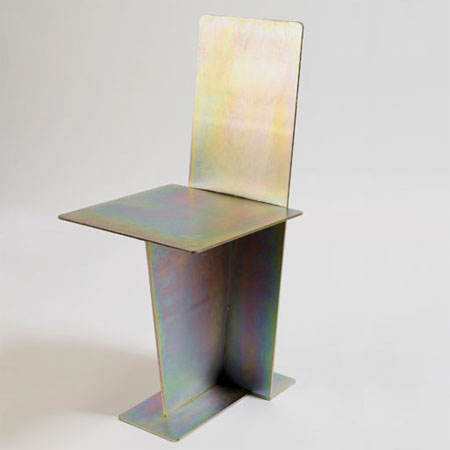
Beau Sauvage at Gallery Libby Sellers
Beau Sauvage, a "pop-up" exhibition by Gallery Libby Sellers and featuring work by Max Lamb (above) Peter Marigold, Tomas Kral and others opened at Liberty in London last week.
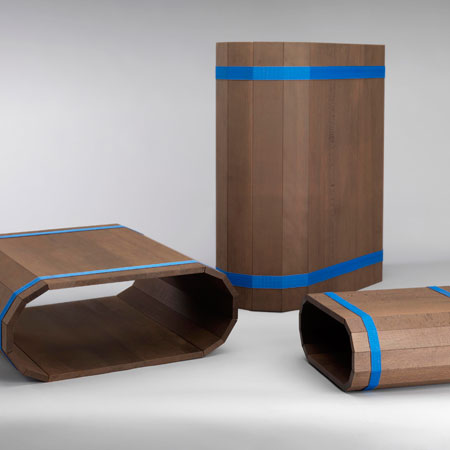
The exhibition celebrates "the beautiful and the raw" in contemporary design. Top image: Flat Iron by Max Lamb. Above: Barrels by Adrien Rovero
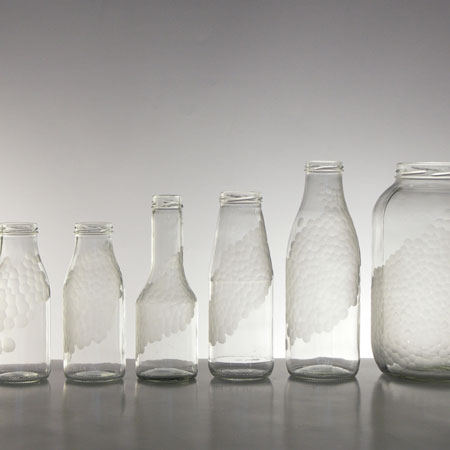
Above: Upgrade by Tomas Kral
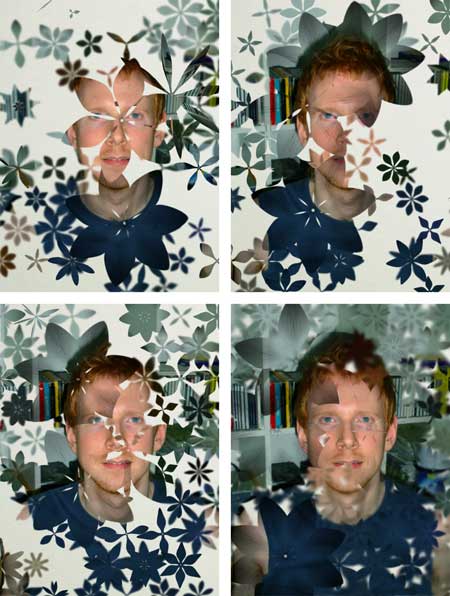
Above: interactive mirror by Daniel Brown
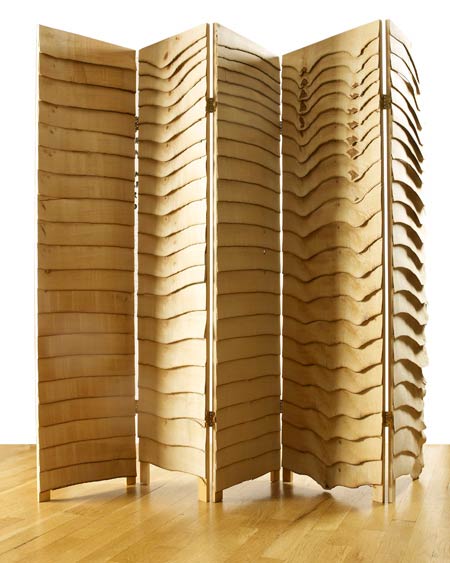
Above: Yield Screen by Peter Marigold
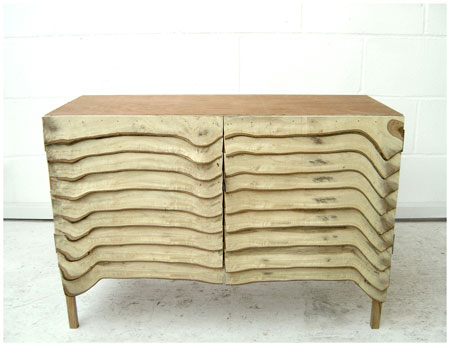
Above: Slice Cabinet by Peter Marigold
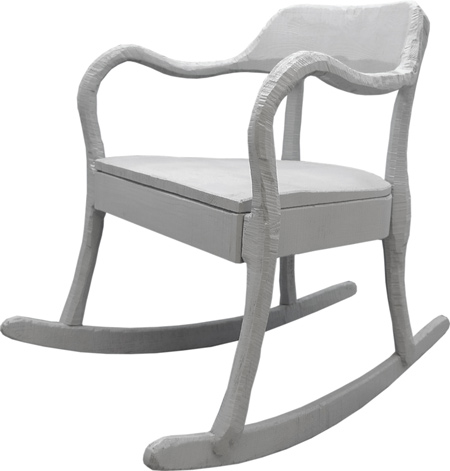
Above: RAW_Rocker by Jens Fager.
The following information is from Gallery Libby Sellers:
--
GALLERY LIBBY SELLERS PRESENTS
Beau Sauvage at Liberty
19 September – 19 October 2008
Beau Sauvage is the latest in a series of group exhibitions by Gallery Libby Sellers – a roaming gallery that commissions works from progressive and emerging designers.
The exhibition takes it cue from the writings of political philosopher Jean Jacques Rousseau. What 18th century culture lacked, he argued, was nature, passion, emotion, instinct and mysticism. Similar observations could be made of our own contemporary landscape, in which the ubiquitous and homogenized have become the accepted norm. By championing designers who celebrate the raw and the beautiful, Beau Sauvage presents an engaging and dramatic alternative.
All works are exclusive to Gallery Libby Sellers and available for purchase.
Secret Garden
Daniel Brown, 2008
Edition of 25
Daniel Brown’s work is at the vanguard of new media design. By employing complex mathematical programming to create delicate and nature-inspired imagery, he brings elegance, sensuality and a continuum of beauty to the sterile world of internet and digital technologies. The Secret Garden is Brown’s latest software program, specifically written to bring his signature aesthetic to a more personal, one-to-one scale piece.
For Beau Sauvage he has devised a program that continuously captures the portrait of whomever stands in front of the monitor – like a mirror – over which a field of digital flowers slowly start to blossom and fade in response to the sitter’s physiognomy. Like much of Brown’s generative work, the beauty of the Secret Garden belies the technical specificity behind its creation.
Brown is currently New Media Director for Nick Knight’s fashion and art website showstudio.com. His works are part of the San Francisco Museum of Modern Art’s permanent collection. He was awarded the London Design Museum's Designer of the Year prize in 2004 and was recently selected amongst The Observer newspaper’s '80 people who will define the next 10 years’.
RAW_Rocker and RAW_Side
Jens Fager, 2008
Pine
Edition of 12 each
Following his recent graduation from Konstfack – the art and design university of Stockholm, Sweden – and his international debut at the Satillite Salone del Mobile in Milan 2008, Jens Fager presents the RAW_Rocker and RAW_Side table.
From the initial cartoon-like sketches in his notebook, Fager transformed the two dimensional into three by cutting locally sourced Swedish pine on a band saw. The surrealistic and idiosyncratic nature of the RAW series gives an initial impression of naïve, almost accidental objects, but the pieces have been meticulously cut to create designs that resonate beyond their playful personas.
Upgrade
Tomas Kral, 2008
Glass
A recent graduate of the École cantonale d’art de Lausanne (ECAL) in Switzerland, Tomas Kral has created the Upgrade project to bring two contrasting aesthetics together. The aim was to apply the elaborate decorations typical of precious Bohemian cut glass to simple jars and bottles. By cutting, engraving and gilding the recycled glassware, Kral has created a truly beautiful yet unassuming series of glass vessels.
The Upgrade series is a fitting and sophisticated first for the Slovak designer and an elegant union of ideologies. Kral’s work is the perfect embodiment of the raw and the beautiful.
Flat Iron Chair
Max Lamb, 2008
Laser cut steel, zinc plating with trivalent passivate
Edition of 36
Whether gouging polystyrene, lathing felt or casting pewter from sand moulds, Max Lamb creates visually arresting designs that have materials and process at their core. But unlike many of his previous designs in which the processes have involved reduction, removal, extraction or excavation, the Flat Iron Chair is a celebration of construction and of augmentation.
The building analogy goes beyond the physical process to the inspiration behind the project – Lamb’s fascination with the i-beam, the steel girders traditionally used in the construction and architecture industries.
Lamb worked through a detailed series of models, material trials and computer visualisations until his original i-beam literally grew into the highly sculptural chair. The stunning results mark a significant development for Lamb, one of the four winners of Design Miami/Basel’s 2008 Designers of the Future award.
With thanks to Isamu Noguchi.
Thin Slice Cabinet and Yield Screen
Peter Marigold, 2008
Eucalyptus, oak, ply
Bay tree on ramin
Edition of 10 each
Springing from a desire to “amplify” the logic of the natural world, Peter Marigold emphasises the phenomena found in nature’s form and inverts structures, to bring the unseen inside out.
The Thin Slice series is named after a principle in psychology that highlights mankind’s capacity to discern vast amounts of information about a situation from a relatively small amount of data – ‘Thin Slicing’. In preparing the Thin Slice cabinet and Yield screen, Marigold laid out the cross section layers of the respective woods in the sequence in which they were cut, thereby revealing the growth patterns within the tree – and suggesting that this growth period has been slowed down. For Marigold, Thin Slice continues his interest in how altered geometry has a potent effect on our perception of the objects around us.
Pied de Biche
Peter Marigold, 2008
Steel
Marigold’s fascination with exposing the hidden or unappreciated elements of an object led him to create Pied de Biche, a reworking of the classic Dexion shelving unit.
By cutting, turning and welding the existing legs of the unit, Marigold not only reveals the uncelebrated decorative elements within the stock-standard unit but also questions the fixed nature of such standardised forms and components.
As he says, “the self-assembly shelving is representative of a object that we have come to accept as normal, never questioning its physical make-up. Despite being a manufactured system, we surprisingly consider the regularity of its forms as having some kind of natural and acceptable logic.”
Hidden Wealth Classic
Khashayar Naimanan, 2008
Manufactured by Nymphenburg Porcelain
With porcelain of matchless purity, the hand-thrown dinnerware series is produced to the same exacting standards mastered by Nymphenburg in the mid-18th century. Khashayar Naimanan’s elegant pattern, inspired by traditional detailing from Napoleonic France, is both a respectful acknowledgment and an invigorating addition to Nymphenburg’s distinguished heritage. While the hand-painted detailing identifies the series as a luxury good, the pattern is painted on the underside of each piece – only the owner need know it is there.
The full series comprises a dinner plate, side plate, deep plate, soup cup, lid and saucer, teacup and saucer.
Barrels
Adrien Rovero, 2008
Heat-treated beech
Edition of 10
Adrien Rovero's Barrel series merges the time-honoured with the contemporary to produce low-level tables and storage units of the finest craftsmanship.
After first studying interior design, Rovero went on to receive both graduate and post-graduate degrees from the École cantonale d’art de Lausanne (ECAL), regularly winning competitions and exhibiting collective and solo projects.
The Barrel series is reminiscent of previous projects in which he has sought to reinvigorate traditional design practices or endangered design typologies: from his extruded ceramic and cork containers, to the three legged milking stool and conductor’s baton designed in association with ECAL. Like all of Rovero’s designs, the Barrels are thoughtful interpretations of everyday life, infused with both humour and rigorous attention to detail.
Beau Sauvage at Liberty
Great Marlborough Street, London W1
19 September – 19 October, 2008.
Monday – Saturday 10am – 9pm
Sunday 12pm – 6pm